
Uncommon Accessory Pathways
Raja Selvaraj
Professor of Cardiology
JIPMER
Introduction
What are "usual" accessory pathways ?

Ohnell RF. Acta Med Scand. 1944; 152: 1–167.
Unusual accessory pathways
- Unusual location
- Unusual properties
- Unusual origin and insertion
Unusual location of "usual" pathways
- CS diverticulum
- Atrial appendage
- Non annular pathways
CS diverticulum
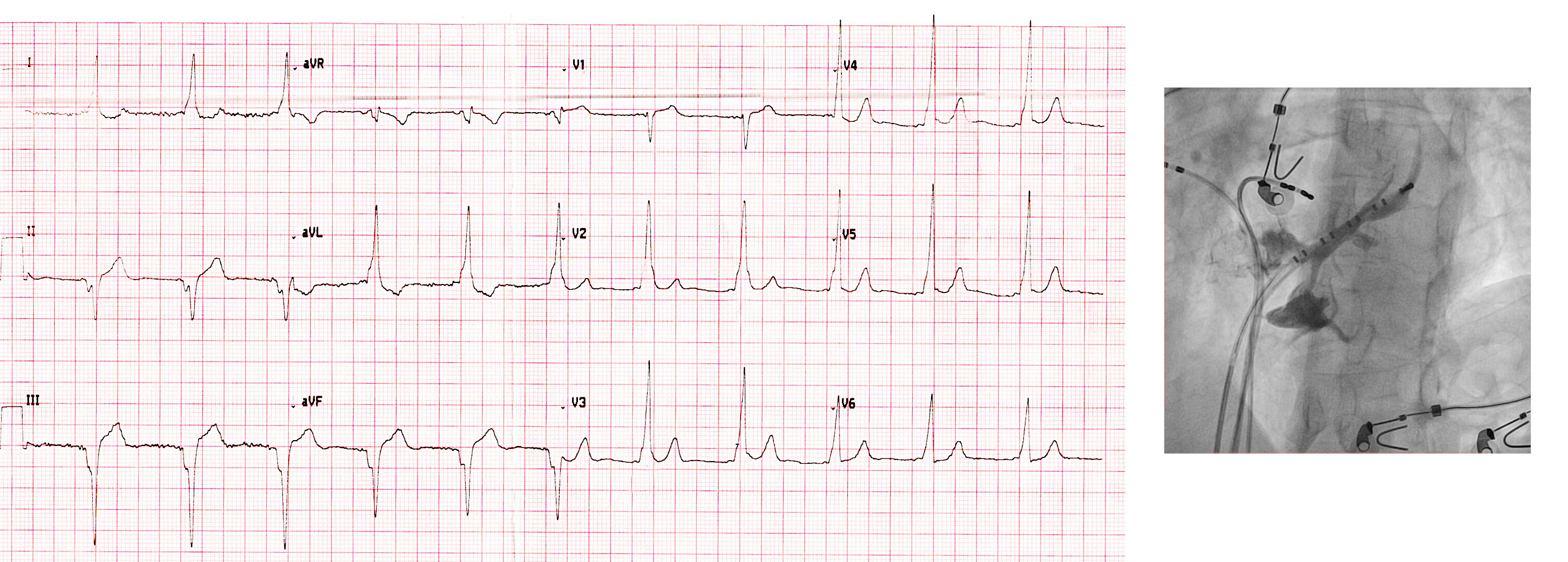
Appendage pathways
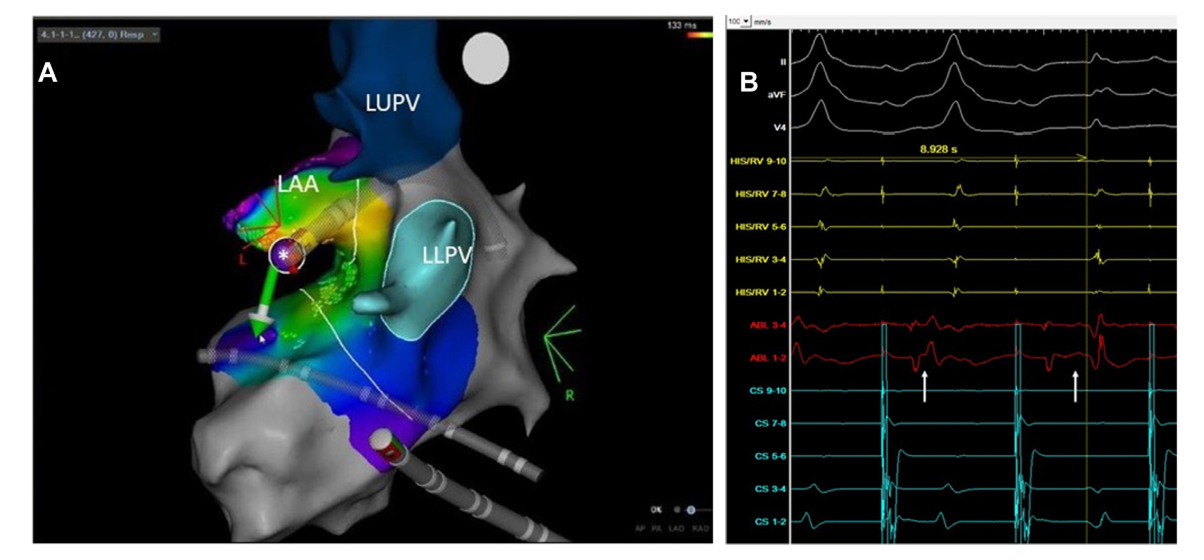
Nikola Dragisic, MD, FACC, Emily R. Backes, MD, Lindsey Malloy-Walton, DO, MPH, Philip M. Chang, MD, FACC, FHRS. Atrial appendage accessory pathway ablation: Tips for recognition and approach to ablation. Heart Rhythm Case Reports, Vol 9, No 12, December 2023 876
LAA pathway
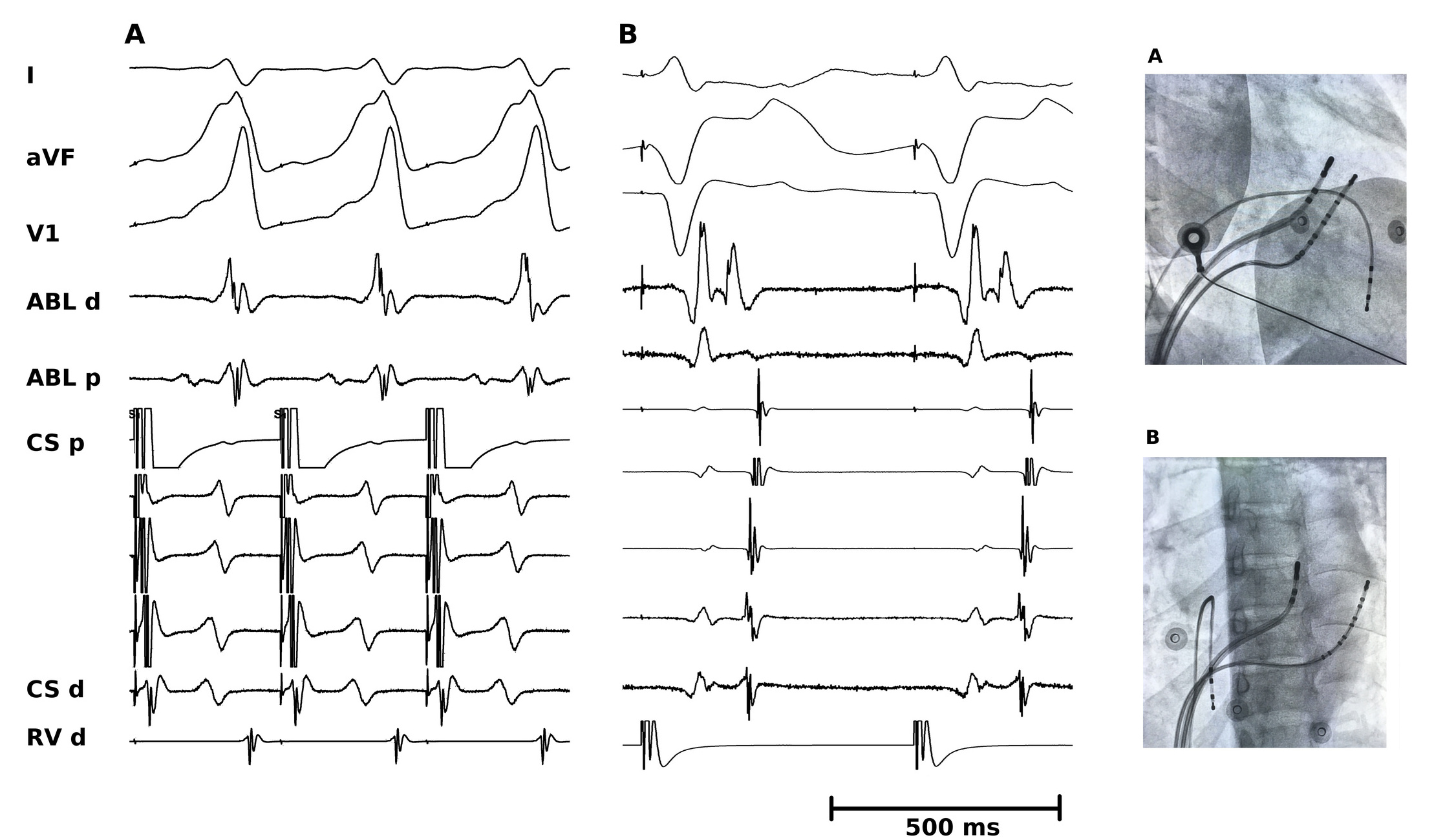
Insertion away from annulus

CHEN, M., YANG, B., JU, W., CHEN, H., CHEN, C., HOU, X., … CAO, K. (2010). Right-Sided Free Wall Accessory Pathway Refractory to Conventional Catheter Ablation: Lessons From 3-Dimensional Electroanatomic Mapping. Journal of Cardiovascular Electrophysiology, 21(12), 1317–1324. https://doi.org/10.1111/j.1540-8167.2010.01857.x
Unusual characteristics of "usual" pathways
- Decremental
- Slant
Unusual origin and insertion
- Atriofascicular AP
- Nodoventricular AP (manifest and concealed)
- Nodofascicular AP
- Fasciculoventricular AP
Atriofascicular AP
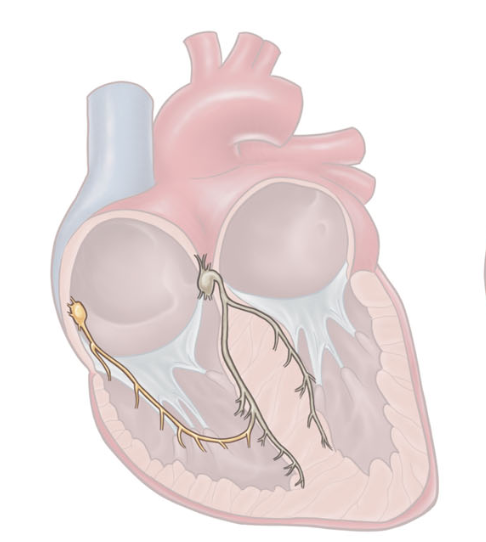
Prove atrial origin
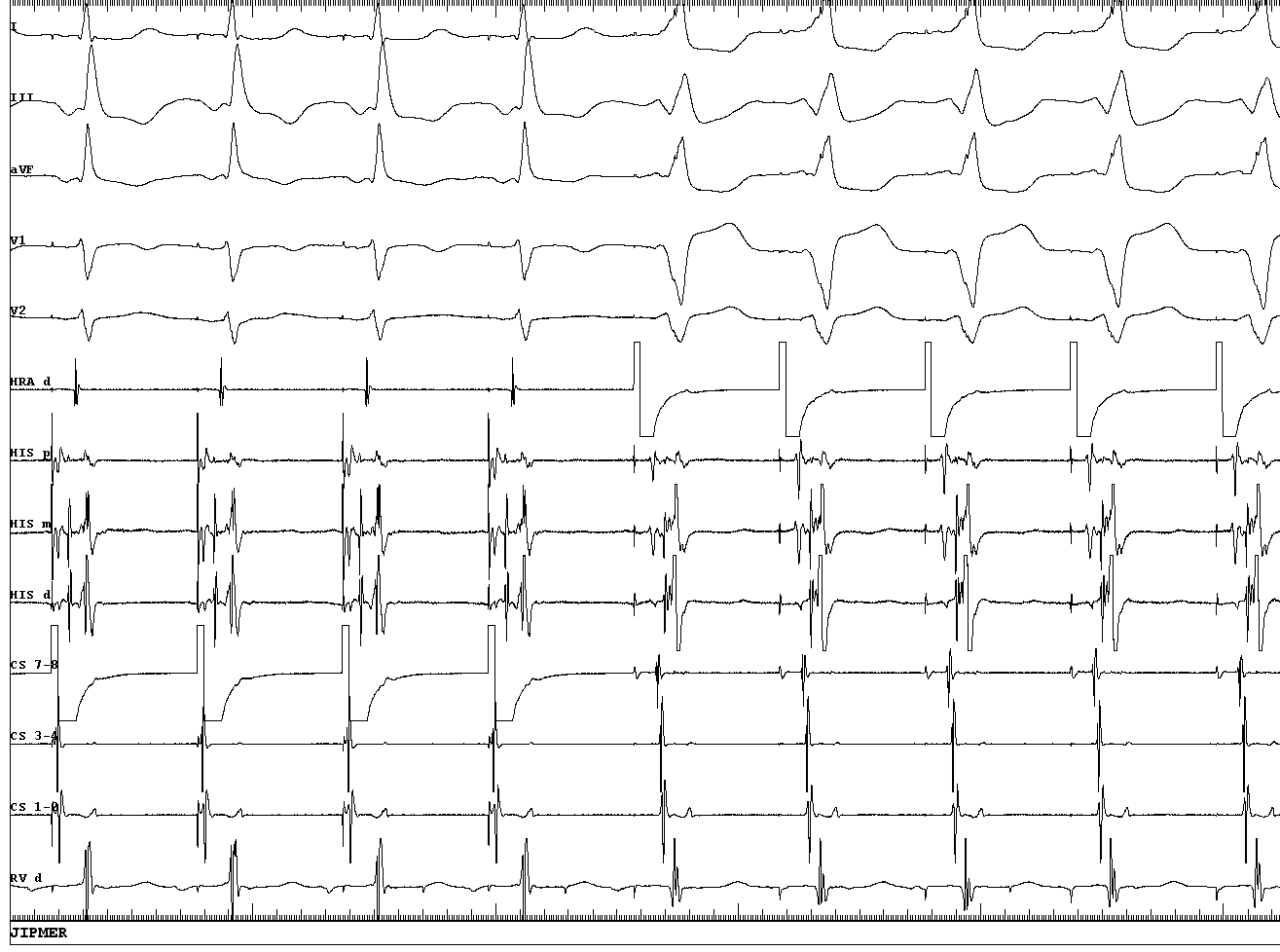
Prove atrial origin
Prove His insertion
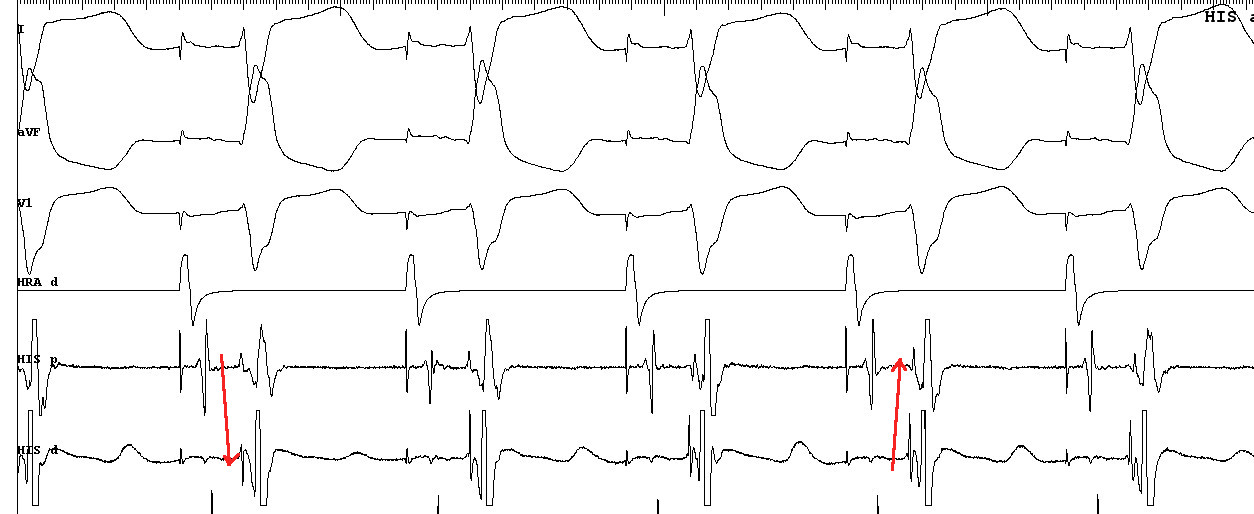
Prove His insertion
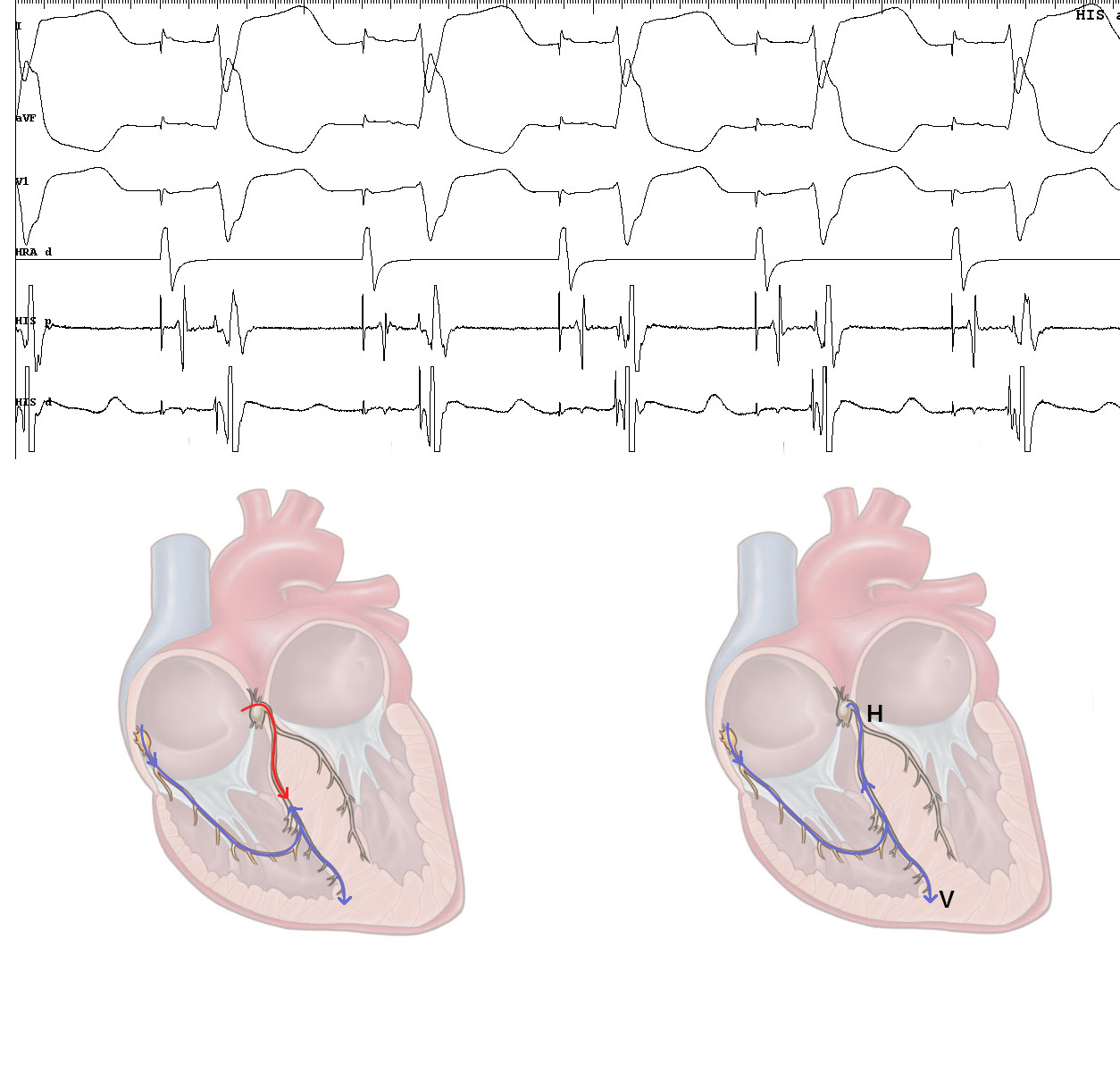
DD - Manifest Nodoventricular / Nodofascicular AP
- Prove proximal insertion in atrium
DD - Long or short AV pathway with decremental conduction
- VH during tachycardia
- Ventricular insertion close to annulus
Mapping
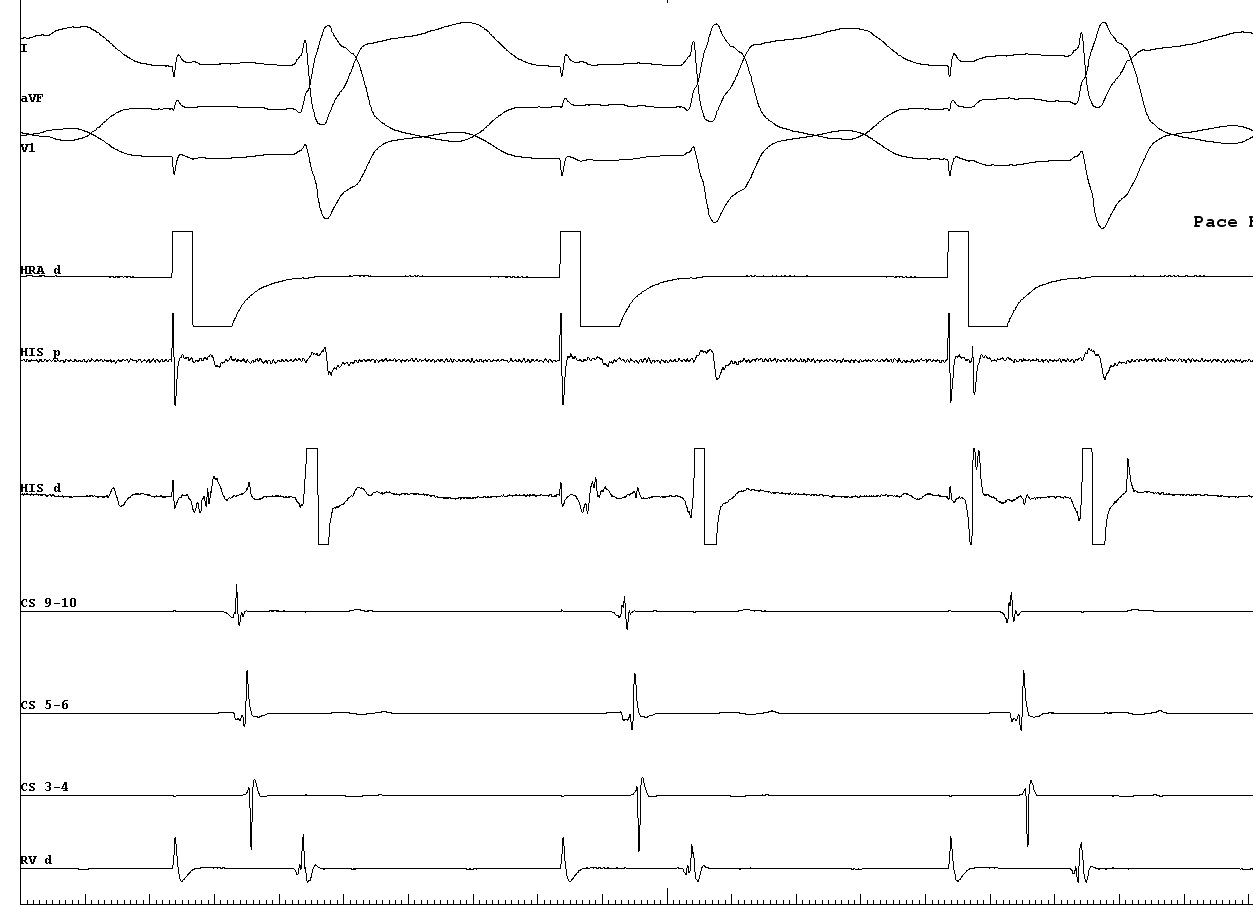
Ablation

Nodoventricular AP / Nodofascicular AP (manifest)
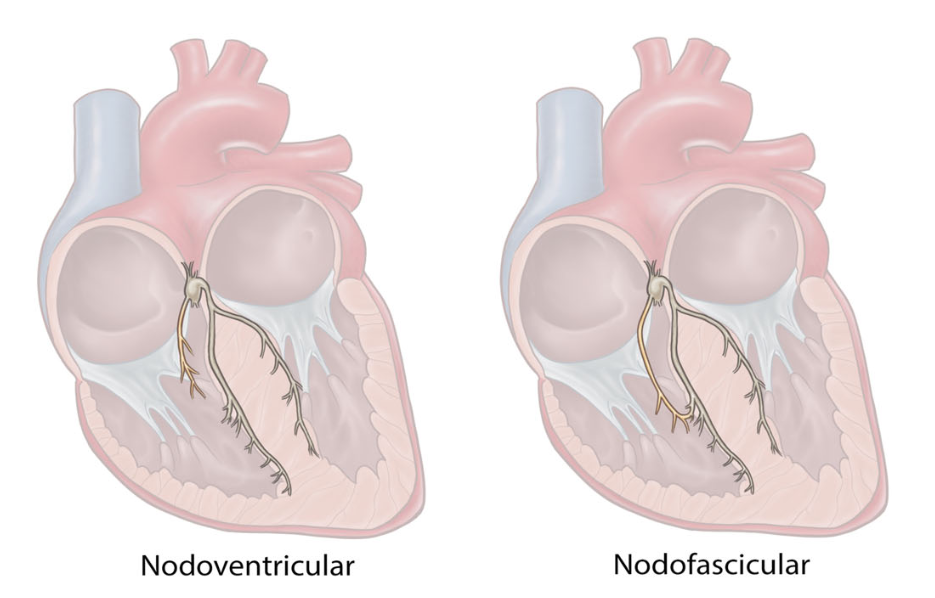
Original description by Mahaim
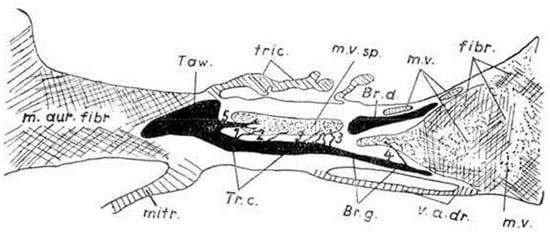
Mahaim, I. Kent’s fibers and the AV paraspecific conduction through the upper connection of the bundle of His-Tawara. Am. Heart J. 1947,33, 651–653.
"Mahaim" pathway
- Electrophysiologic correlation of Mahaims description (1)
- Understanding of separate pathway along right AV groove (2,3)
- Wellens HJJ. The preexcitation syndrome. In: Wellens HJJ, ed.Electrical Stinulation of the Heart in the Study and Treatment ofTachycardias. Baltimore, Md: University Park Press; 1971:97-109
- Gillette PC et al. Prolongedand decremental antegrade conduction properties in right anterioraccessory connections: wide QRS antidromic tachycardia of leftbundle branch block pattern without Wolff-Parkinson-White con-figuration in sinus rhythm. Am Heart J. 1982;103:66-74.
- Klein GJ et al. "Nodoventricular" accessory pathway:evidence for a distinct accessory atrioventricular pathway withatrioventricular node-like properties. JAm Coil Cardiol. 1988;11:1035-1040.
Manifest NV / NF pathway
- Less common than concealed
- Present like atriofascicular AP
- Atrium not part of circuit - can be dissociated
- Differential pacing - same preexcitation
- Septal refractory PAC cannot preexcite V
Nodoventicular AP
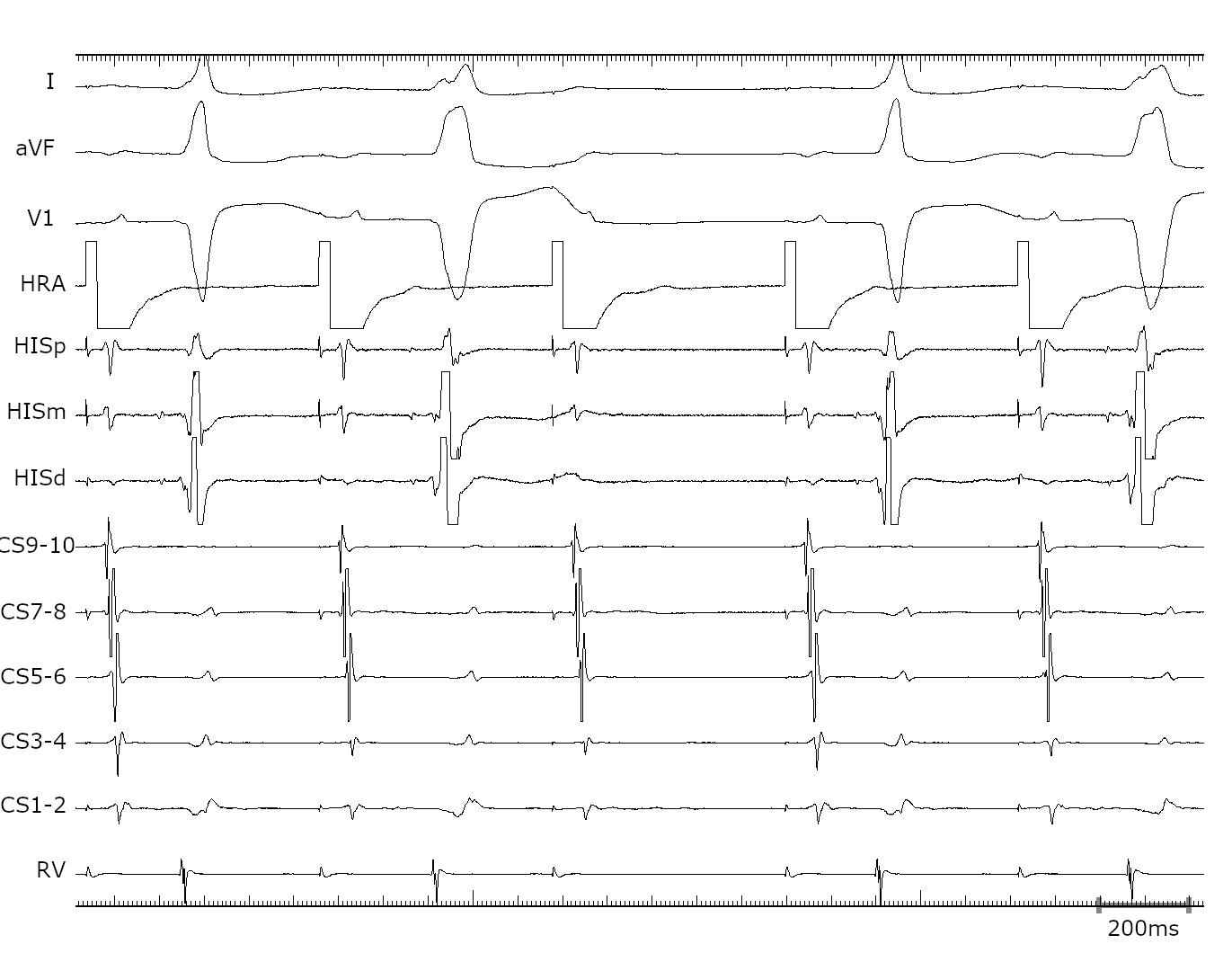
Nodoventicular AP
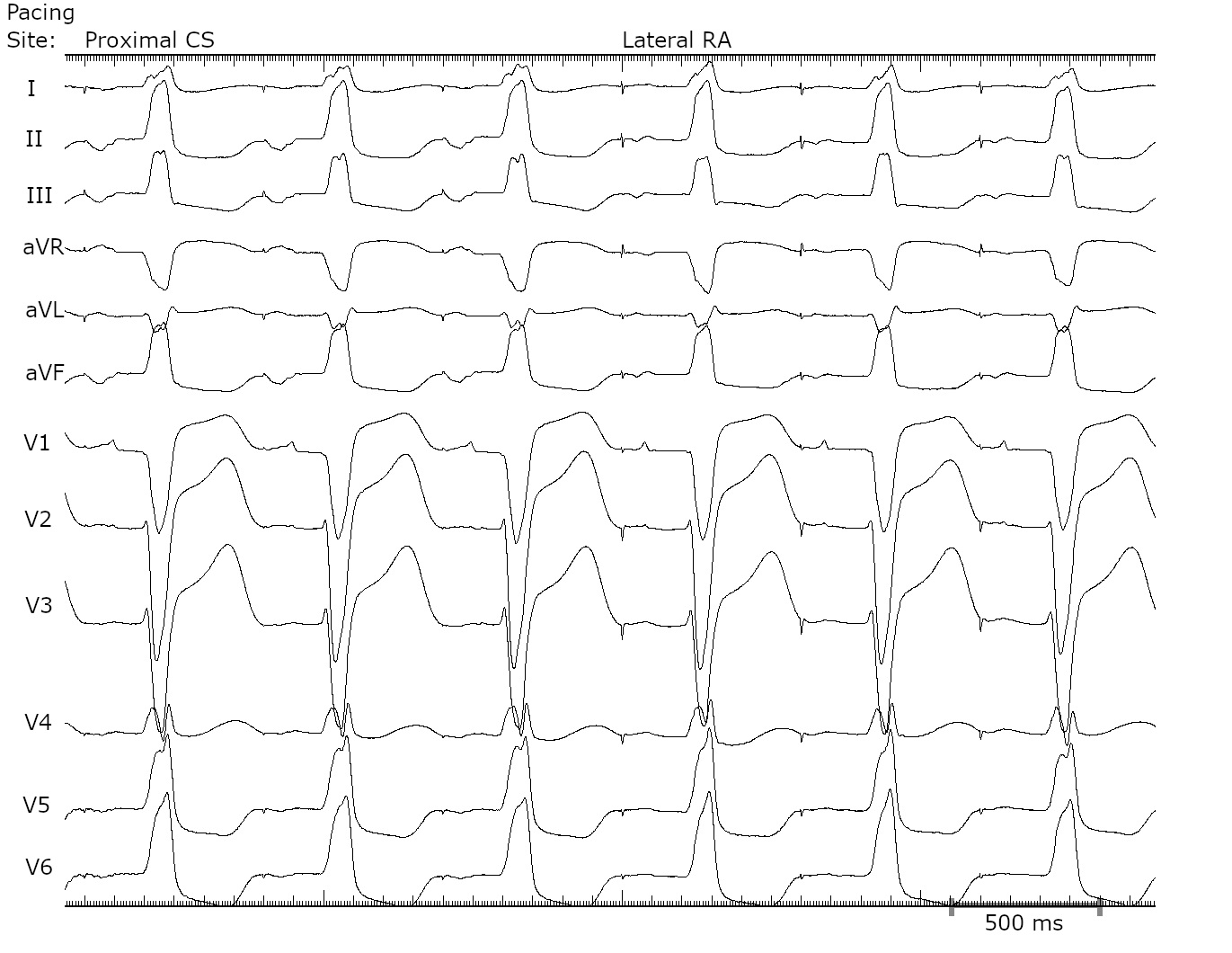
Nodoventricular / Nodofascicular AP (concealed)
Proximal insertion
- Insert commonly into slow pathway (RIE)
- Can be left sided (LIE) and mapped in CS
Mimic AVNRT
- Orthodromic tachycardia
- Narrow QRS, variable VA
- A can be dissociated
- VAV response
- AH sinus > AH tachycardia
Differentiate from AVNRT
- Reset of His by His refractory PVC
- PPI - TCL shorter than AVNRT
- Entrainment with fusion (NV)
Case 1 - SVT in 42 F

Entrainment from base (cPPi-TCL 80)
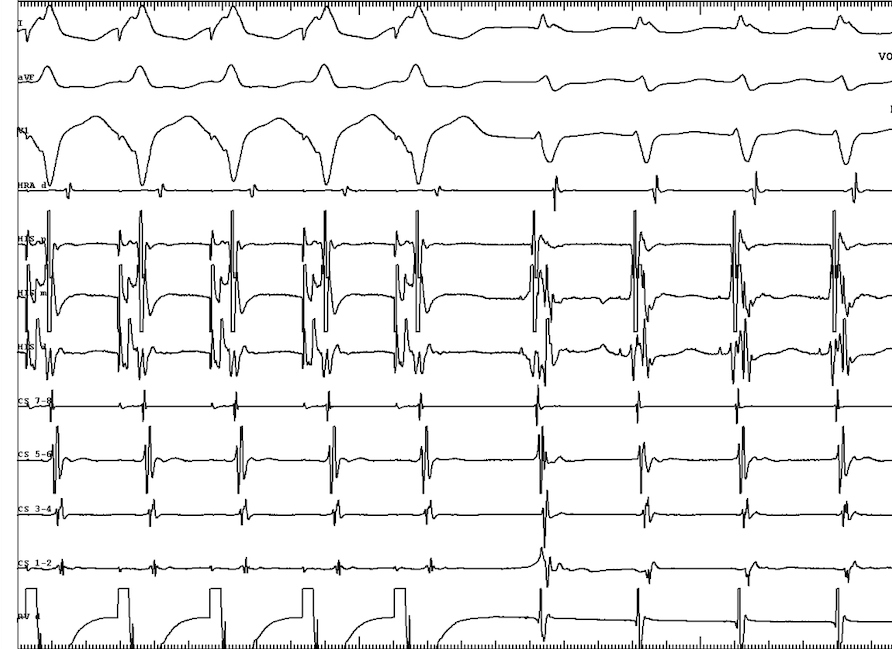
Entrainment from apex (PPI-TCL 96)
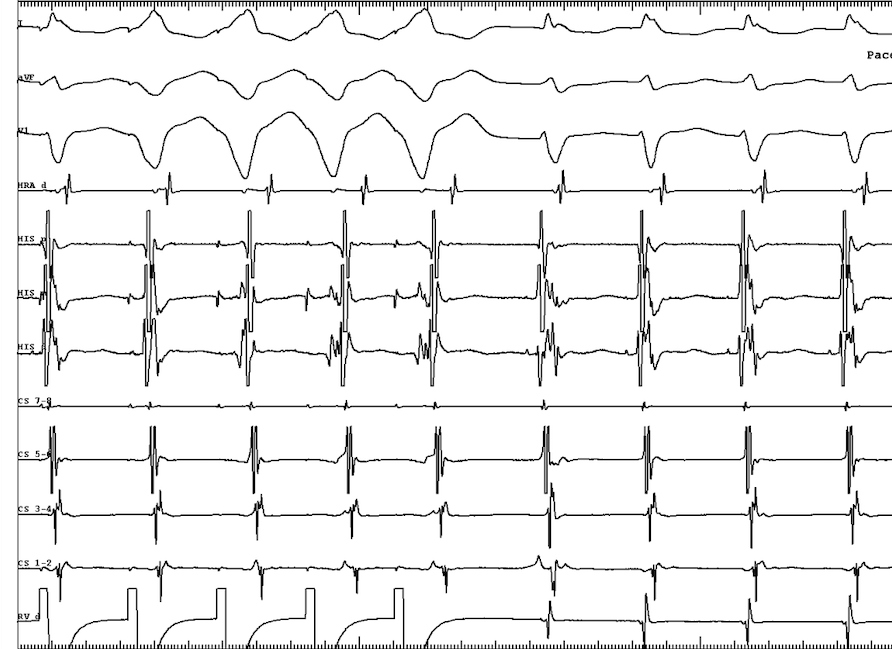
PVC on His
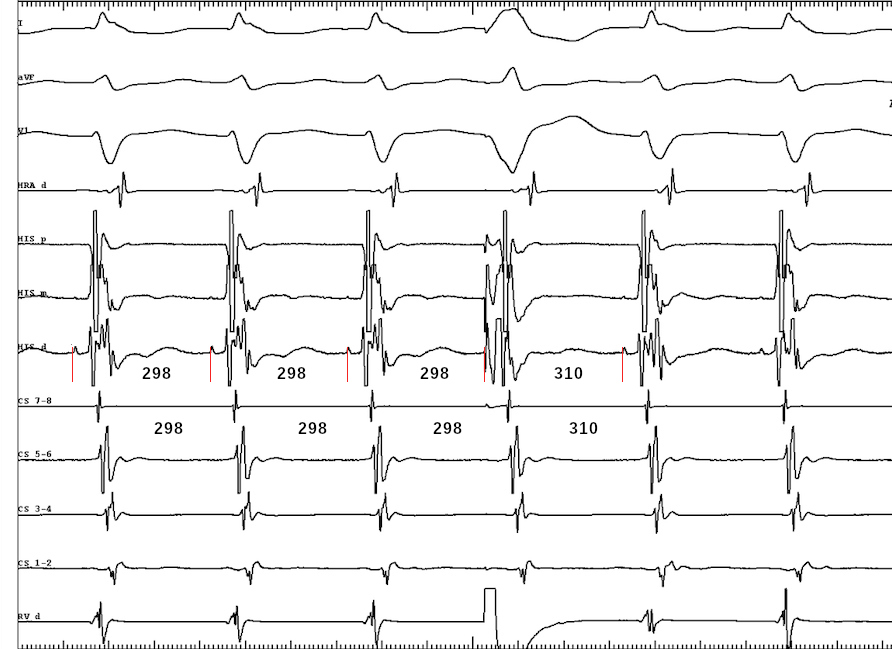
Diagnosis
- Concealed nodoventricular AP
- Orthodromic tachycardia
- Successful ablation at RIE
Case 2 - 42 F - Tachy induced with A extra. VA 126
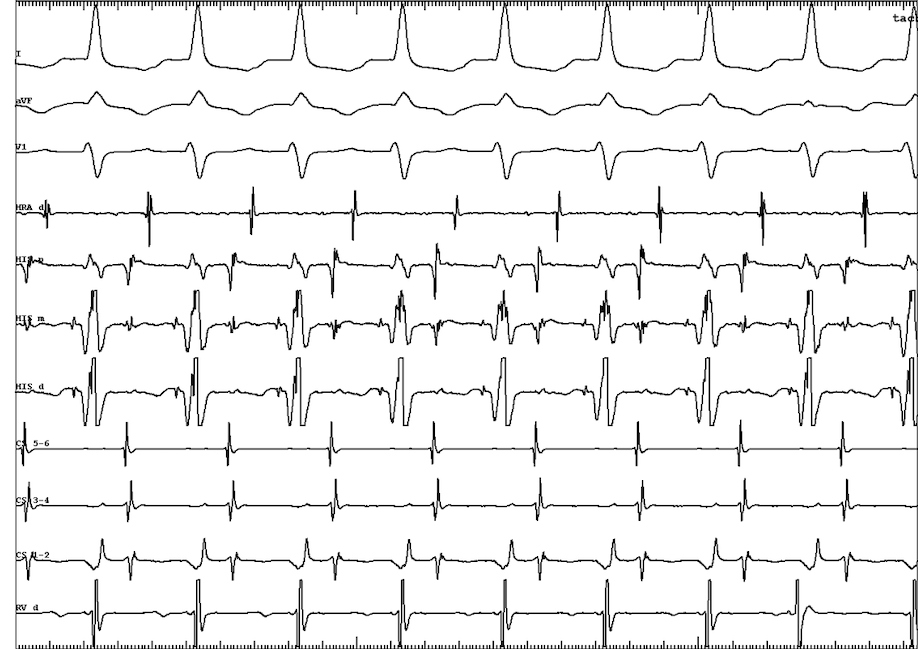
PVC on time with His

VOP from base - cPPI-TCL 140 ms
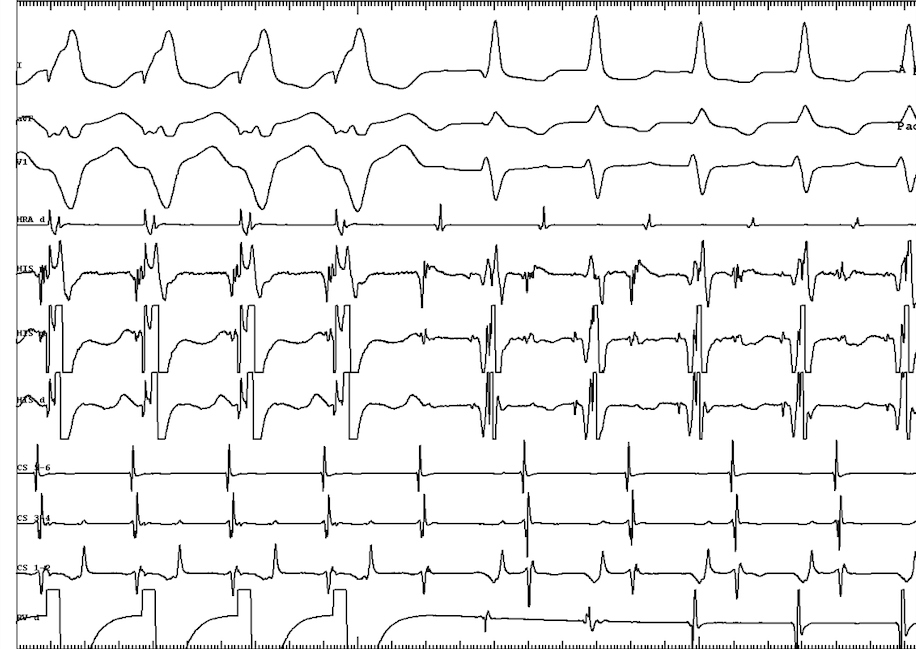
VOP from apex - cPPI-TCL 180 ms
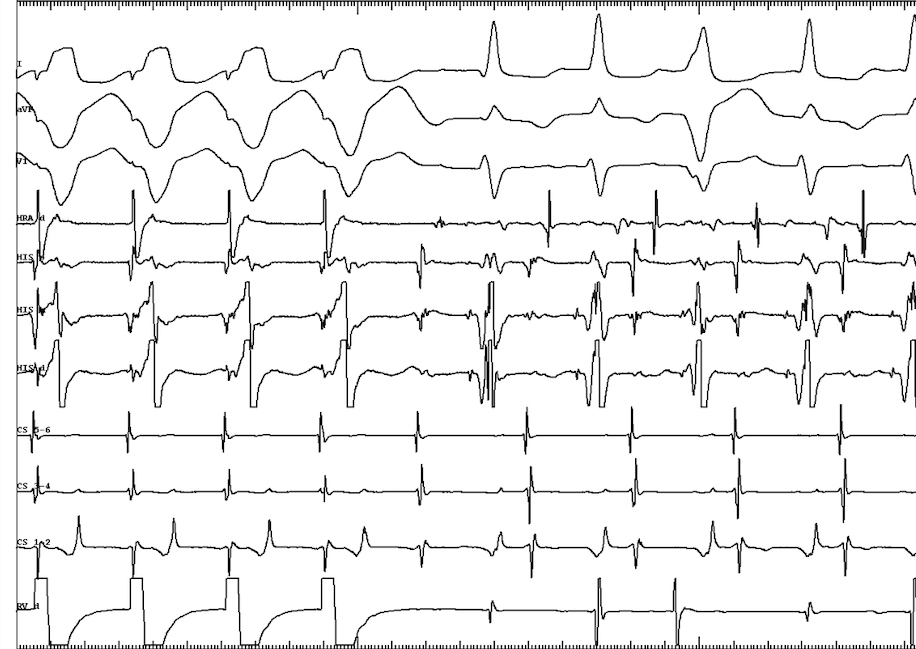
VA from base and apex
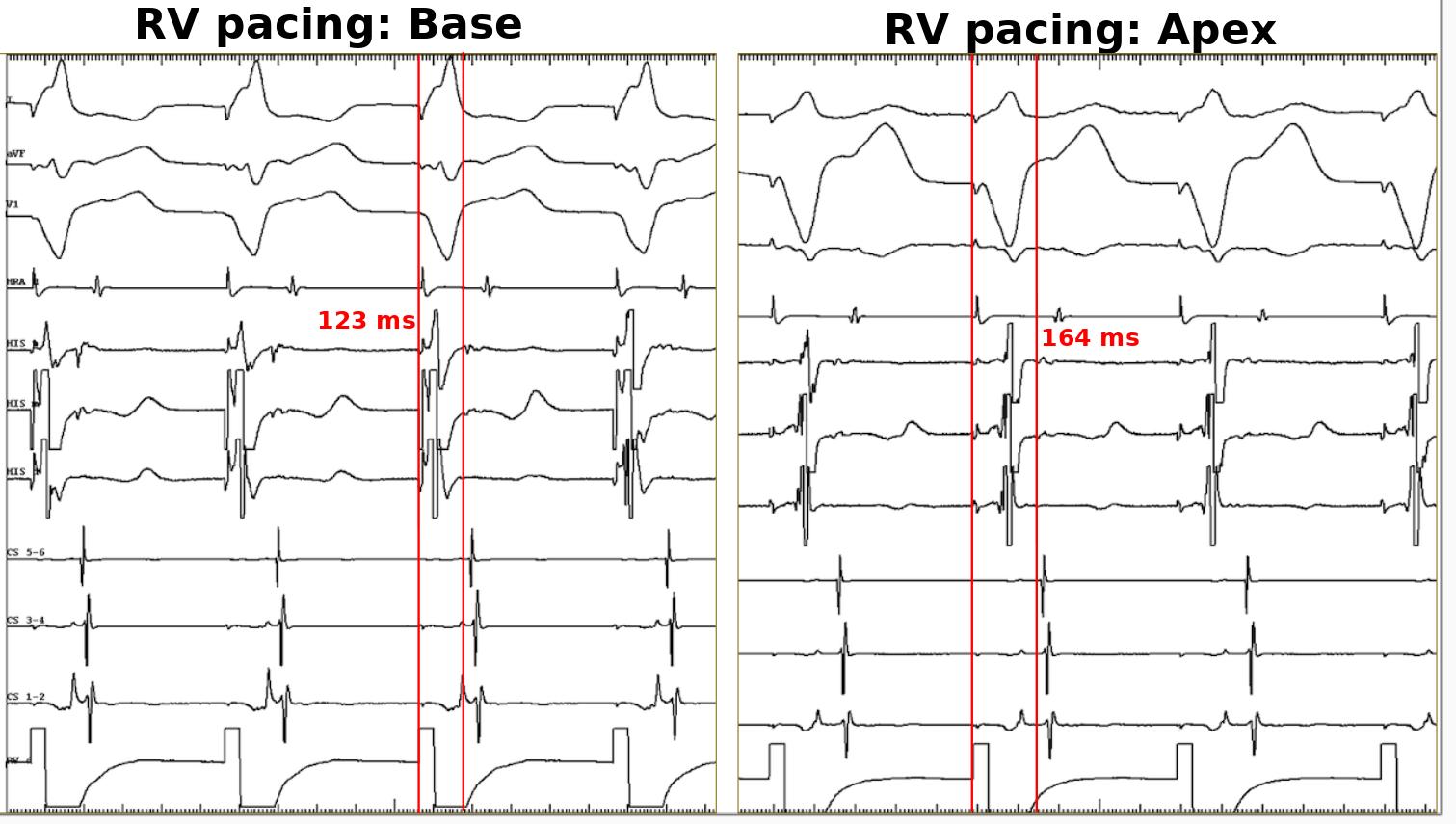
Parahisian (extranodal)
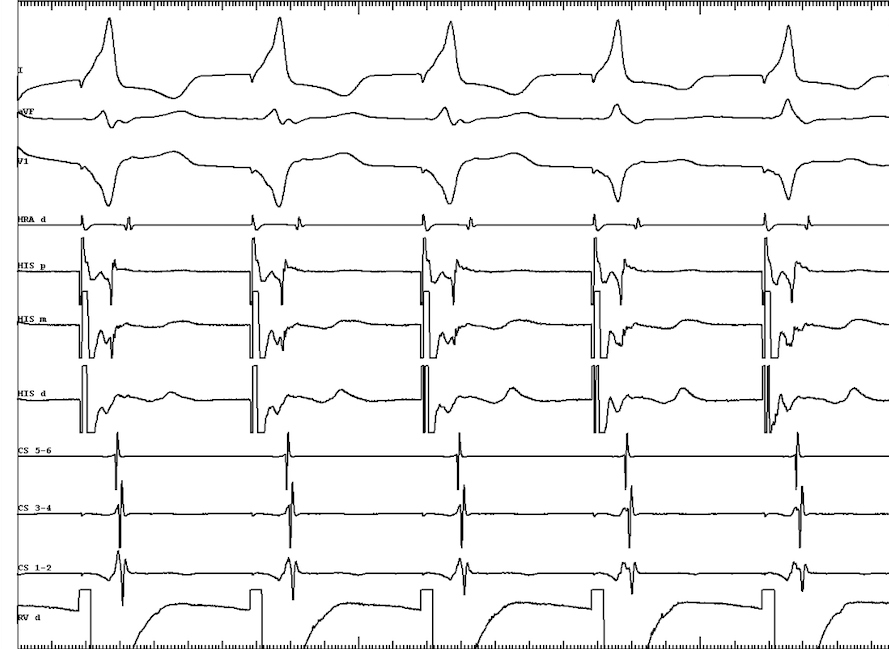
Diagnosis
- Atypical AVNRT
- Bystander concealed nodoventricular AP
- Successful ablation at RIE
VOP beginning

Two phase resetting
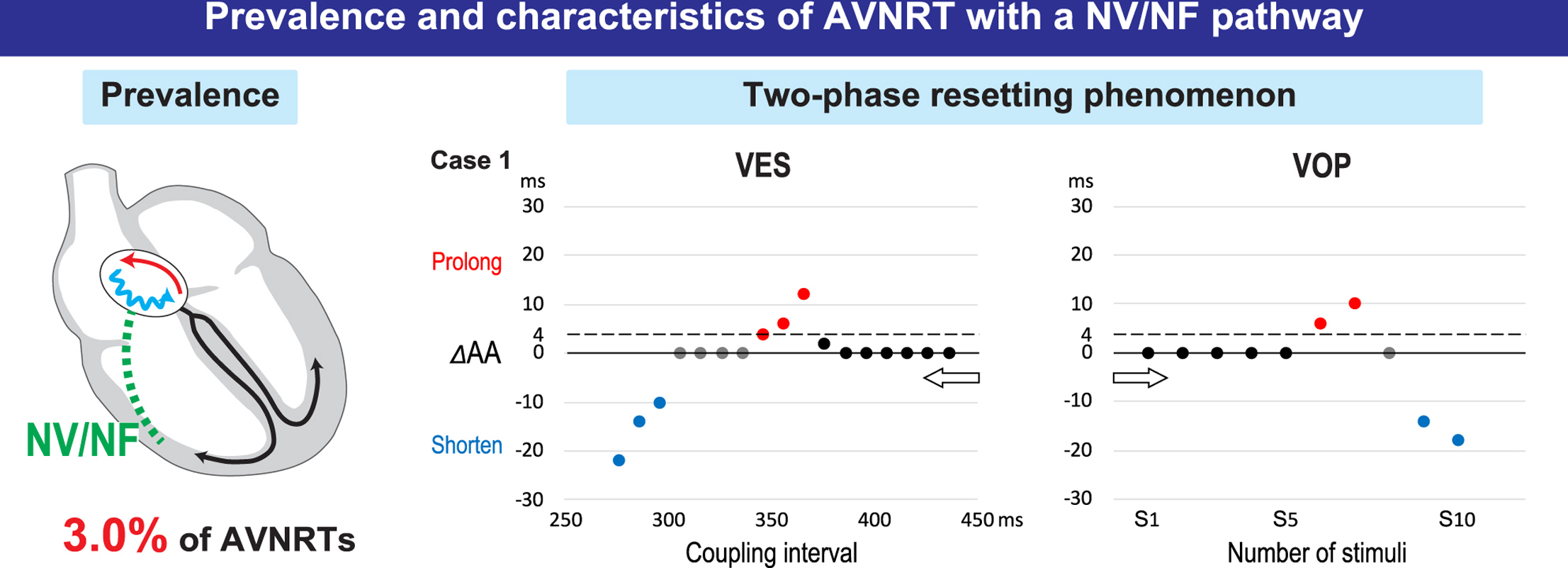
Nishiwaki S, Shizuta S, Kohjitani H, Ono K. Prevalence and characteristics of atrioventricular nodal reentrant tachycardia with a bystander concealed nodoventricular/nodofascicular pathway. Heart Rhythm. 2024 Jun 26:S1547-5271(24)02823-6.
Orthodromic AVRT with Nodoventricular / Nodofascicular AP
- Like AVNRT
- His refractory PVC resets A / next His (bystander / participating)
- PPI-TCL < 125 (NV participating)
- PPI-TCL shorter at base (NV)
- VA shorter at base (NV)
- Entrainment with fusion (NV)
Fasciculoventricular AP
ECG
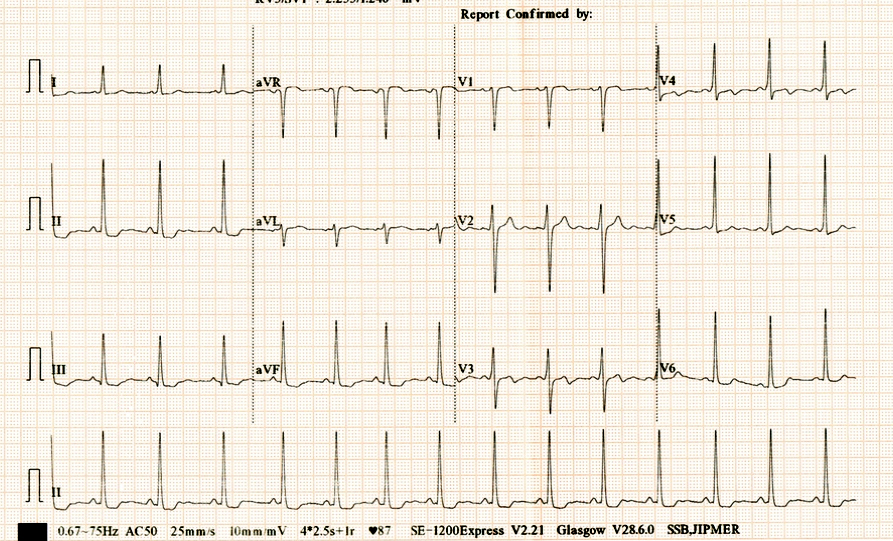
Constant preexcitation
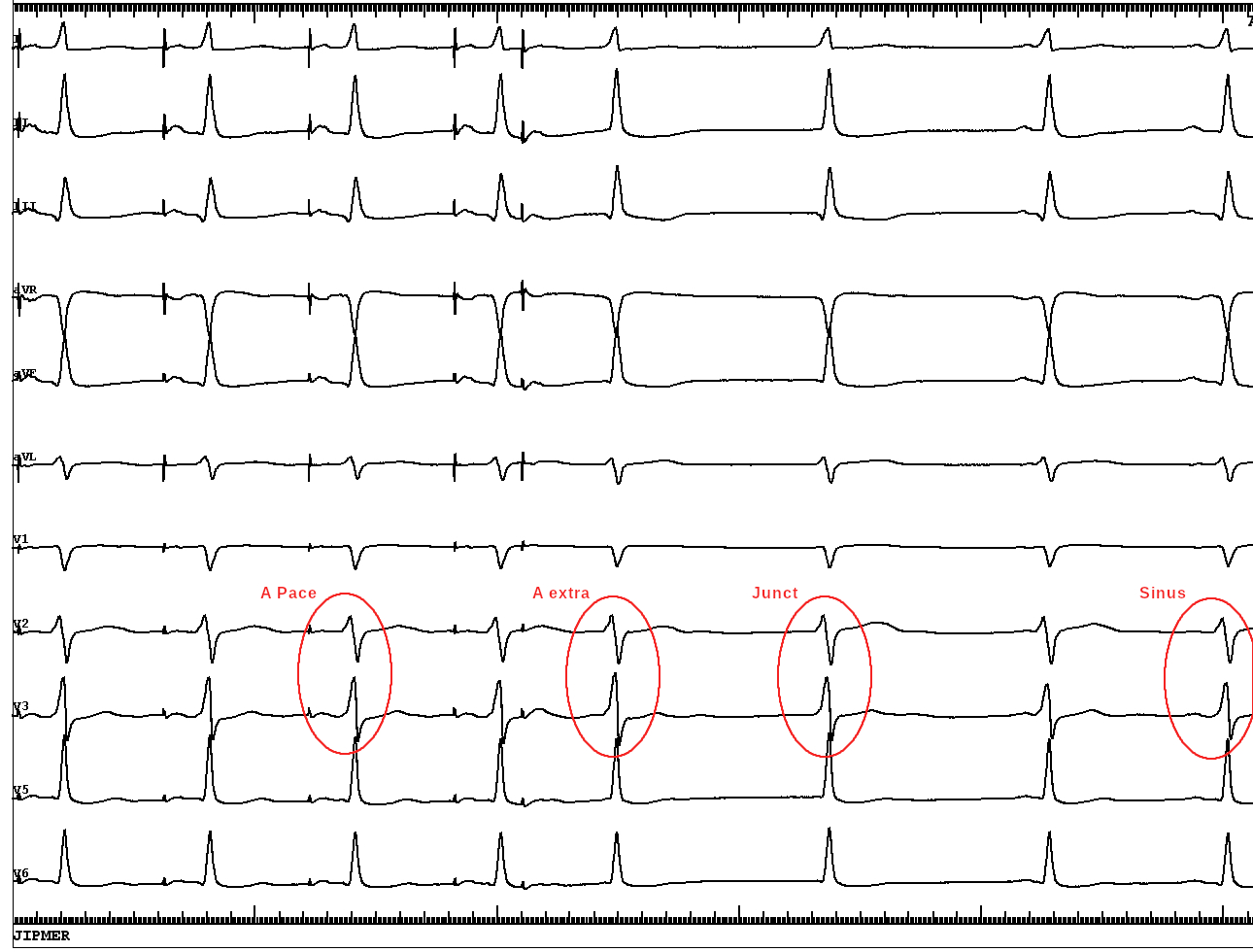
Constant HV
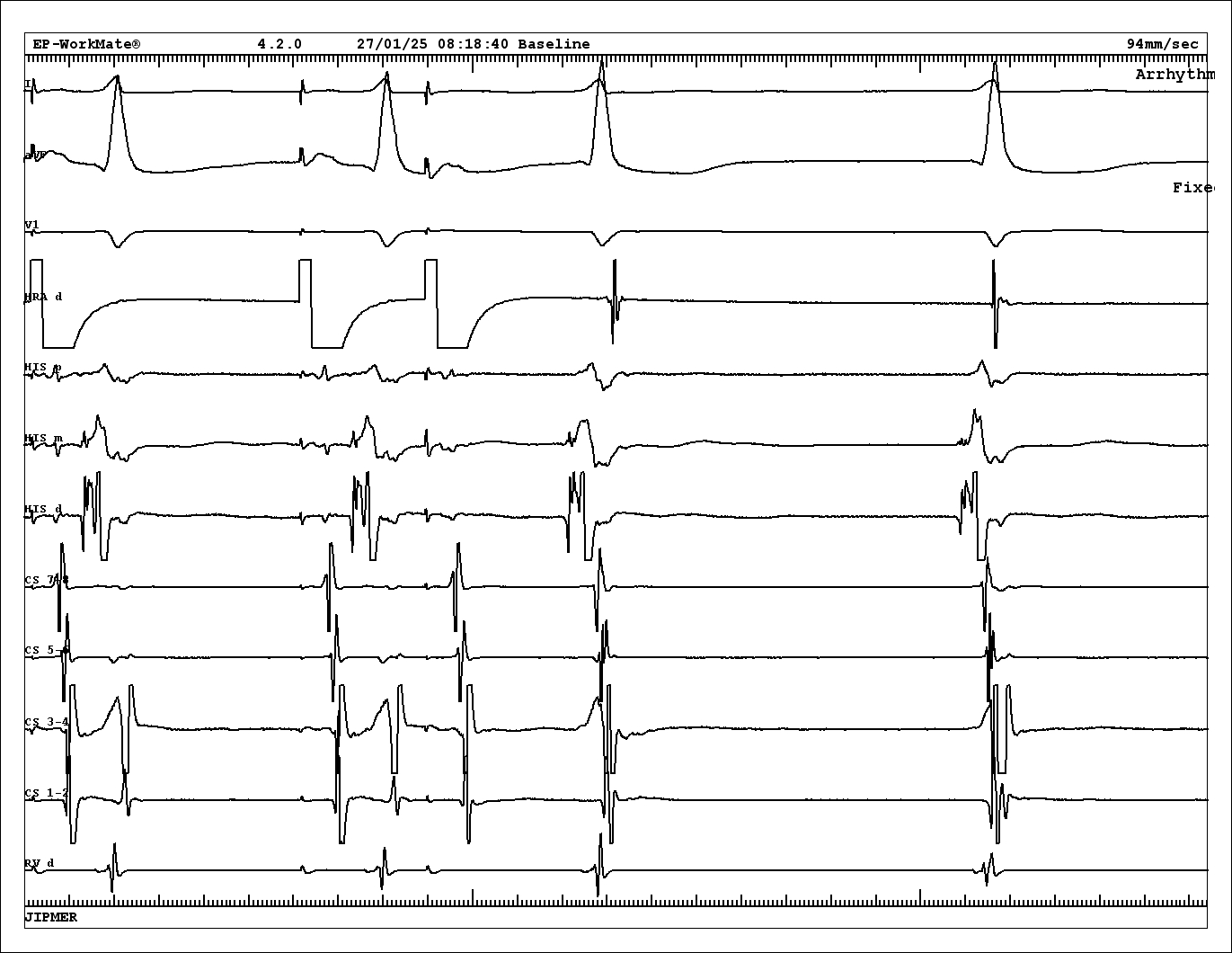
Adenosine
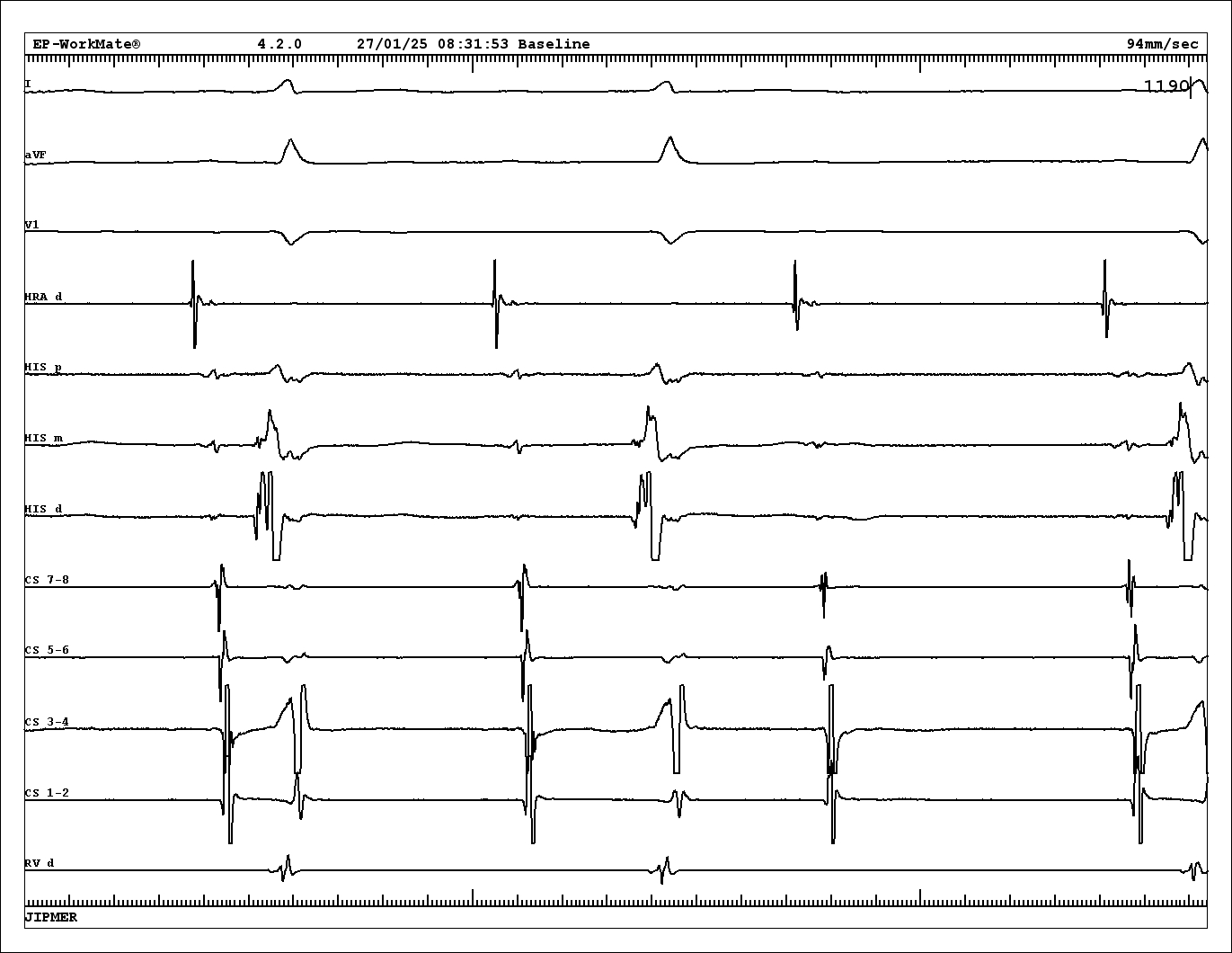
Retrograde conduction (22 ms)
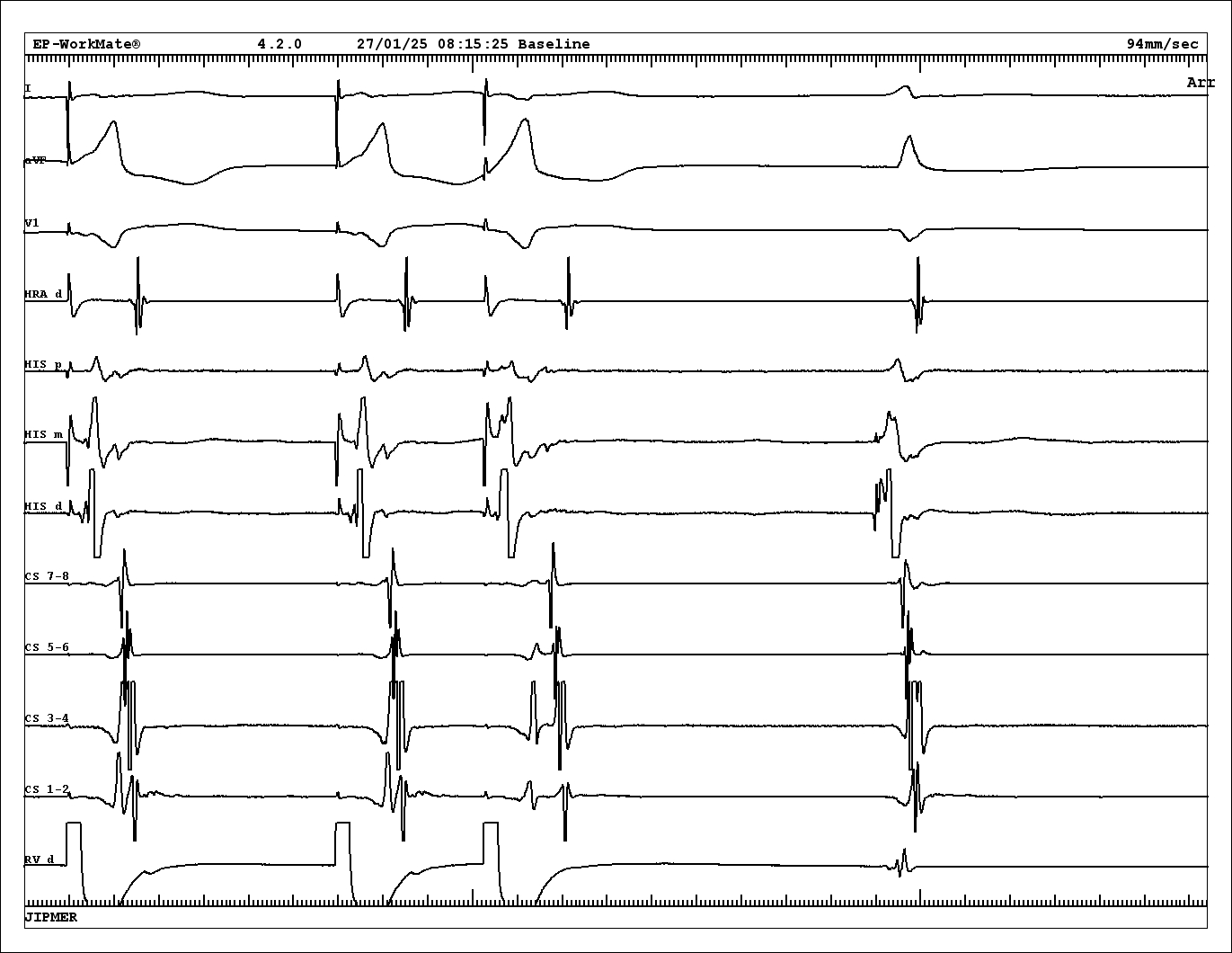
Other arrhythmias
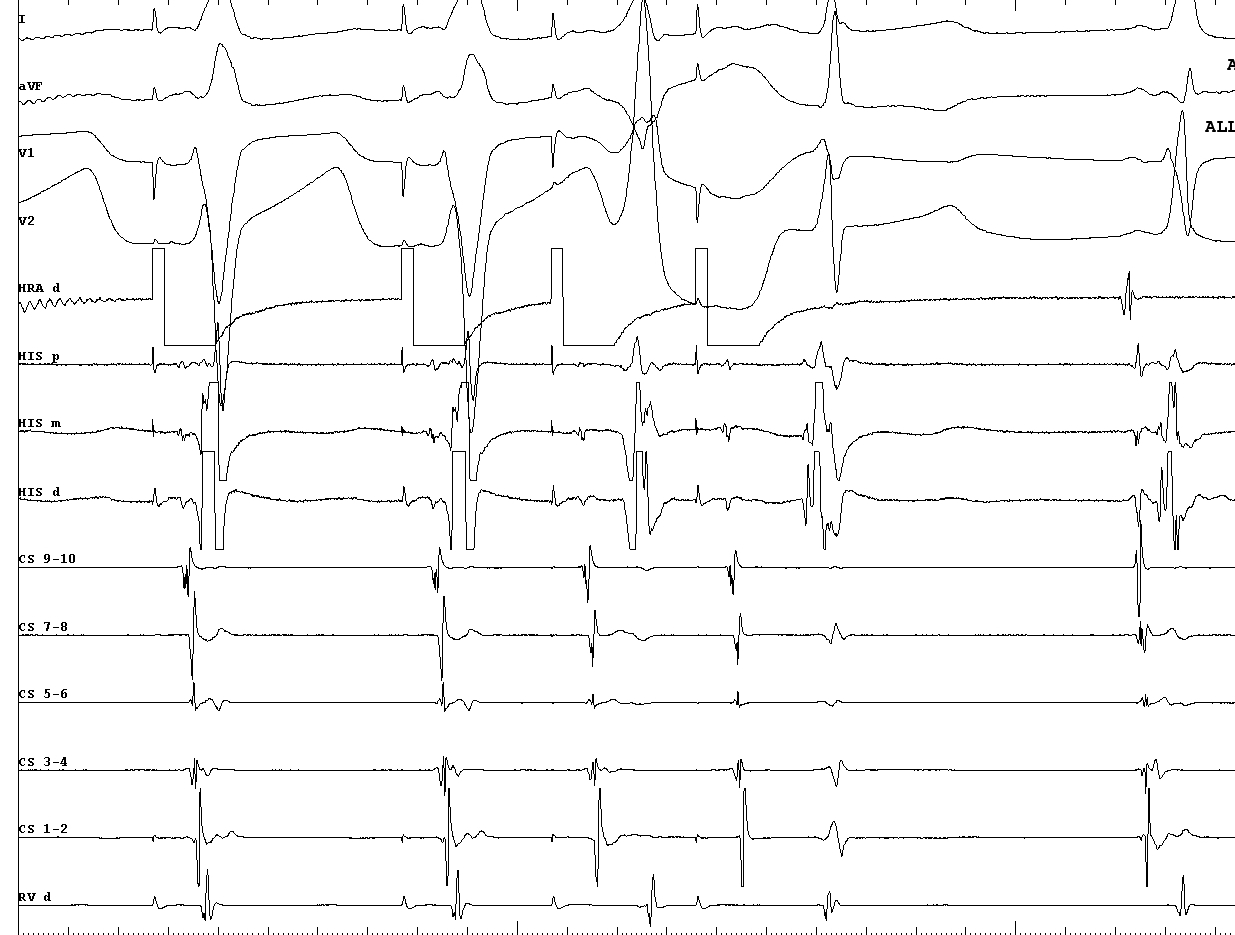
Summary
- LBBB tachycardia / mild preexcitation / decremental, antegrade only conduction - AFAP
- NVAP with Antidromic tachycardia is a DD - prove proximal insertion in atrium
- Concealed NV / NF AP not uncommon - under recognised
- FV AP - mild, asymptomatic preexcitation, constant preexcitation.